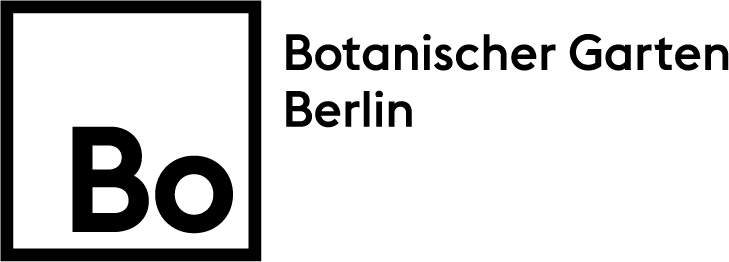Current projects
TETTRIs (EU, 2022-2026) aims to produce a transformative change in the role played by taxonomy in tackling biodiversity challenges by boosting taxonomic capacity and transferring critical scientific knowledge to societal actors
The community of facilities, collections and experts gathered around CETAF envisions that the taxonomic knowledge and expertise required to study, protect and manage biological diversity throughout Europe become easily and openly accessible, sustained over time and integrated into decision-making processes. To achieve that, TETTRIs contributes to Transform Taxonomy in Europe trough:
- Training: Advancing taxonomist workforce, with capacity building and training programmes to facilitate the continuous upgrade of competencies and skills.
- Research Transfer: Engaging citizen scientists in natural sciences, as key actors in co-generating taxonomic knowledge and collecting biodiversity data.
- Innovation: Developing innovative methods and digital solutions to improve taxonomic knowledge, support integrative and comprehensive taxonomy, speed up species discovery and description, and making collections and knowledge available at large scale.
In TETTRIs, the BGBM deals with the opimisation of EU Nomen Services and the processes for aggregating the underlying data. Another topic is the provision and documentation of workflows to link locally used taxonomies with European and international taxonomic backbone services.
„Die Herbonauten – Das Herbar der Bürgerwissenschaften“ (2016 – 2024) involviert Bürgerwissenschaftler*innen in einem partizipativen und interaktiven Format in die Erfassung von Herbaretiketten für die Datenbanken des BO. Die Instandhaltung sowie Ausbau und Weiterentwicklung der Plattform in Bezug auf aktuelle Forschungsfragen am BO sowie auf Forschungsfragen im Citizen-Science-Kontext wird vom Verein der Freunde des Botanischen Gartens und Botanischen Museums gefördert. „Die Herbonauten“ tragen damit zur freien Nutzbarkeit von Biodiversitätsdaten weltweit sowie zu einer Vermehrung und Vernetzung von Wissen aus dem Kontext der Biodiversität bei.
GGBN-Tec
99 Partnerinstitutionen aus 33 Ländern machen mehr als 3 Millionen DNA- und Gewebeproben ihrer biologischen Sammlungen digital zugänglich – das ist die aktuelle Erfolgsbilanz des 2011 gegründeten Global Genome Biodiversity Network (GGBN). Das internationale Netzwerk hat sich zum Ziel gesetzt, durch den weltweiten Austausch von Wissen und Materialien die Erforschung der biologischen Vielfalt zu stärken und ihren Erhalt zu sichern. Nun fördert das Bundesministerium für Bildung und Forschung (BMBF) den Ausbau der digitalen Infrastruktur des GGBN mit 0,8 Mio. Euro. Geleitet wird das auf fünf Jahre (2022 - 2026) angesetzte Vorhaben am Botanischen Garten Berlin der Freien Universität Berlin.
NFDI4BioDiversity is a consortium of 49 partners dedicated to deliver practical tools for researchers and improve data availability for environmental studies/ecology. We are part of a greater network within the German National Research Data Infrastructure (NFDI), which is funded through a 10-year-programme of the Joint Science Minister Conference in Germany (GWK). Starting in October 2020, the first funding phase runs for five years until September 2025.
BiCIKL will catalyse a culture change in the way biodiversity data is identified, linked, integrated and re-used across the research cycle. We will cultivate a more transparent, trustworthy and efficient research ecosystem.
BiCIKL will launch a new European starting community of key research infrastructures, researchers, citizen scientists and other stakeholders in the biodiversity and life sciences based on open science practices through access to data, tools and services.
DiSSCoPrepare
DiSSCo officially launched its preparatory phase in February 2020 with DiSSCo Prepare, the primary vehicle through which DiSSCo will reach the overall readiness necessary for its construction and eventual operation.
To achieve construction readiness, DiSSCo Prepare will develop a comprehensive Construction Masterplan around five critical implementation areas: technical readiness, scientific readiness, data readiness, organisational readiness and financial readiness.
Europeana Digital Service Infrastructure (DSI)
The Europeana DSI project is funded under the Connecting Europe Facility (CEF) that supports trans-European networks and infrastructures in the sectors of transport, telecommunications and energy.
SYNTHESYS, SYNTHESYS-2, SYNTHESYS-3 and SYNTHESYS Plus
A core element in SYNTHESYS is to provide funded researcher visits (Access) to the 390,000,000 specimens housed by SYNTHESYS institutions. In particular, the 4,049,800 type specimens. Alongside the Access, a Joint Research Activity (JRA) aims to improve the quality of and increase access to digital collections and data within natural history institutions by developing virtual collections. Network Activities (NA) will provide enhanced quality and quantity of online collections information to virtual Users and will implement best practice benchmarks in collections care to raise standards and improve accessibility to collections for all physical Users.
The BGBM co-leads work package NA3 (Molecular Collections in the age of genomics - Standards & Processes) and leads task 4.2 (Adoption and development of the CETAF stable identifier framework).
Permanent online resources
Phycobank (Aufbau einer globalen Registration und eines Indexes für Wissenschaftliche Namen und Typen von Algen)
Coordination of the GBIF-D Node System and the Botanical Node
Germany is one of the founding nations of the Global Biodiversity Information Facility (GBIF). Main objective of the GBIF-D project is the focussed collection and mobilisation of suitable data within Germany's research community and natural history collections as well as of the available observation data.
The BGBM is coordinating this 6-partner project to ensure the technical and organisational cohesion of the eight Nodes in the German GBIF system:
• BGBM Berlin-Dahlem responsible for Coordination
• DSMZ Braunschweig responsible for Bacteria & Archaea
• BGBM Berlin-Dahlem responsible for Plants & Protists
• BSM München responsible for Fungi & Lichens
• MfN Berlin responsible for Insects
• ZSM München responsible for Invertebrates II
• Senckenberg Frankfurt responsible for Invertebrates III
• ZFMK Bonn responsible for Vertebrates
• MfN Berlin responsible for Fossils
The German Botanical Node of the Global Biodiversity Information Facility has been established at the BGBM in close collaboration with ten German botanical institutions and five other partner institutions as part of the German contribution to GBIF International. It represents all flowering plants, ferns, and mosses and also puts a special accent on algae and protists.The project at the BGBM supports the German botanical community in their efforts to mobilise botanical data using the BioCASE software and to create a German Virtual Herbarium.
OpenUp! - Opening up the European Natural History Heritage for EUROPEANA
The institutions participating in OpenUp! will provide over one million multimedia objects from the natural history domain to Europeana, the European Virtual Library (www.europeana.eu). OpenUp! is complementary to the eContentPlus project Biodiversity Heritage Library Europe, which mobilised digitised literature in the natural history domain. OpenUp! is an initiative of members of the Consortium of European Taxonomic Facilities (CETAF) and several European nodes of the Global Biodiversity Information Facility (GBIF).
The BGBM is responsible for the overall coordination of OpenUp! and provides high-quality herbarium images to the system.
European Distributed Institute of Taxonomy - EDIT, Platform for Cybertaxonomy
The overall objective of EDIT was to integrate European taxonomic effort within the European Research Area and to build a world leading capacity. EDIT work-package 5 was lead by the BGBM and created the “Internet Platform for Cybertaxonomy”.
The EDIT Platform is an integrated software suite providing tools and support of the entire taxonomic workflow that leads to the creation of taxonomic monographs, checklists, flora and fauna treatments.
The software is further developed, promoted and sustained in the framework of several projects and as a core activity of the BGBM’s Biodiversity Informatics Research Group.
European Distributed Institute of Taxonomy – EDIT Cichorieae examplar group.
In the workpackage "Unifying revisionary taxonomy" of the EDIT project the BGBM created an exemplar site using the EDIT Platform for Cybertaxonomy. The Cichorieae network is sustained by the BGBM’s Asterales Research Group.
DNA Bank Network and Global Genome Biodiversity Network (GGBN)
PESI /EU-Nomen
PESI stands for Pan-European Species directories Infrastructure. Authoritative species name registers are not only essential for taxonomy but important for information systems dealing with species of conservation, pest or commercial relevance as well. PESI enhances the quality and reliability of such European registers by integrating community networks of taxonomic experts into a joint work programme.
In the project (2008-2011, funded by the EU under FP7) the BGBM lead the integration of the European Register of Marine Species, Fauna Europaea and Euro+Med Plantbase into a joint information system. The joint PESI infrastructure is maintained with the partners as an activity of the BGBM’s Biodiversity Informatics Group and in projects such as EU-BON.
Digital specimen images at the Herbarium Berolinense (B)
Since 2004, high resolution digital camera equipment is used to produce digital images of herbarium specimens. The digitisation of type specimens and some of the important collections such as the Herbaria Willdenow and Bridel were and are funded by the Andrew W. Mellon foundation in the framework of the Global Plant Initiative.The German Virtual Herbarium is part of the GBIF-D project financed by the Federal Ministry of Research and Education, which also provided the funding for a large scale improvement of the underlying hardware in 2010. Contributing digitisation activities are also taking place as part of the BGBM’s loan system, and have been supported by the Association of Friends of the BGBM.
A Biological Collection Access Service for Europe: BioCASE
Originally a 35-partner research and development project co-ordinated by the BGBM, starting Nov. 1, 2001 financed under the EU's 5th Framework Programme, Research Infrastructures until Jan. 31, 2005. Since then, the suit of software and activities in the area of has become one of . The BGBM is responsible for over-all co-ordination and for the development of the access system. The initiative is sustained in the framework of SYNTHESYS, GBIF-D and as a core activity of the BGBM’s Biodiversity Informatics Research Group.





